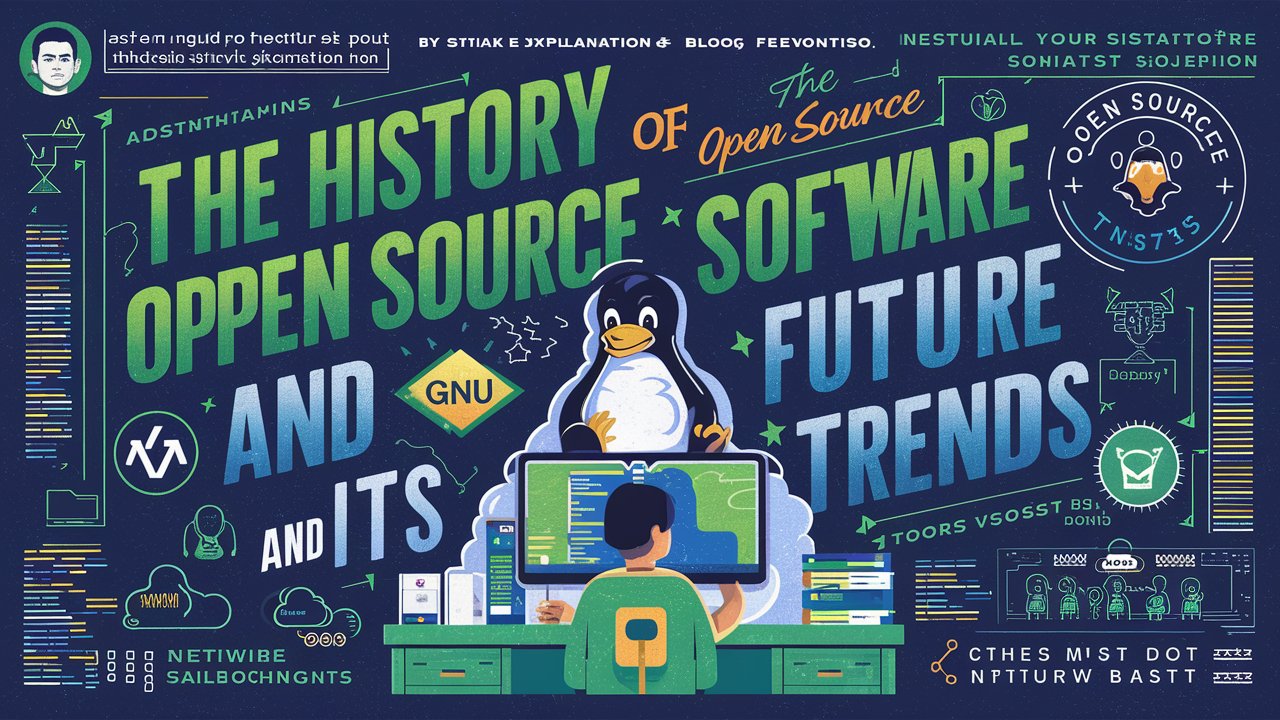Open source software is more than just a technical marvel; it’s a story of innovation, collaboration, and community. This blog post explores the rich history of open source software, tracing its origins, key milestones, and its profound impact on technology. We’ll also look at future trends and the potential of open source to shape the tech world in the years to come.
Table of contents:
- The Origins of Open Source Software
- Major Open Source Projects and Their Impact
- The Future of Open Source Software
- Trends Shaping the Future
- Personal Insights and Reflections
- Conclusion
The Origins of Open-Source Software
The Early Days: From Proprietary Roots to Collaborative Beginnings
Open source software’s roots can be traced back to the early days of computing when software was shared freely among researchers and developers. In the 1950s and 1960s, software was often distributed alongside hardware and was considered a collaborative resource.
Key Figure: Richard Stallman In the 1980s, Richard Stallman, a prominent figure in the open-source movement, launched the GNU Project to create a free Unix-like operating system. His work led to the creation of the GNU General Public License (GPL), which was a major milestone in formalizing open source principles.

The Rise of the Open Source Movement
The term “open-source” itself wasn’t coined until 1998, when the Open Source Initiative (OSI) was formed. OSI was founded by Bruce Perens and Eric S. Raymond to promote the open source philosophy and to provide a clear definition of what constitutes open source software.
| Year | Milestone |
| 1983 | GNU Project Launched |
| 1991 | Linux Kernel Released |
| 1998 | OSI Formed |
| 1999 | Mozilla Open Source |
| 2004 | Ubuntu Released |
Major Open-source Projects and Their Impact
Linux: The Birth of a Free Operating System
One of the most significant achievements in open source software was the creation of the Linux kernel by Linus Torvalds in 1991. Linux has since grown into a powerful and versatile operating system used in everything from personal computers to servers and smartphones.

Key Figure: Linus Torvald‘s decision to release Linux under the GPL license helped solidify the concept of open source software as a viable and competitive alternative to proprietary systems.
Mozilla Firefox: A New Era in Web Browsing
Mozilla Firefox, launched in 2004, was a pivotal moment in the open source movement. It provided a free and open alternative to Internet Explorer, introducing features like tabbed browsing and improved security.
| Browser | Year | Feature |
| Internet explorer | 1905 | Initial Popular Browser |
| Firefox | 2004 | Tabbed Browsing, Extensions |
| Chrome | 2008 | Speed, Integration with Google |
The Future of Open Source Software
Trends Shaping the Future
The future of open-source softwares is bright, with several key trends set to shape its development:
- Increased Corporate Adoption: Major tech companies like Google, Microsoft, and IBM are embracing open source projects, contributing code, and fostering collaboration.
- Growth of Open Source in Cloud Computing: Open source tools and platforms like Kubernetes and Docker are becoming standard in cloud environments, driving innovations in containerization and orchestration.
- Expansion into New Domains: Open source is making inroads into new areas like artificial intelligence, machine learning, and blockchain, with projects like TensorFlow and Ethereum leading the way.
Read more: How to Download Videos from Facebook for free
| Trend | Description |
| New Domains | Increased involvement of tech giants |
| Cloud Computing | Growth of open source cloud solutions |
| New Domains | Expansion into AI, ML, and blockchain |
Personal Insights and Reflections
Reflecting on the journey of open source softwares, it’s clear that the movement has not only provided powerful tools and technologies but also fostered a spirit of collaboration and innovation. The open source community has shown that shared knowledge and collective effort can lead to significant advancements in technology.
As we look ahead, the potential for open source to drive future innovations is immense. With ongoing contributions from developers worldwide and increasing support from corporations, open source software will continue to be a major force in shaping the tech landscape.
Conclusion
From its humble beginnings to its current prominence, open source software has had a profound impact on the tech world. Its history is a testament to the power of community-driven projects and the potential for collaborative innovation. As we move forward, the open source movement will undoubtedly continue to evolve and inspire new generations of developers and tech enthusiasts.


One response to “The History of Open Source Software and Its Future Trends”
I don’t even know if people really wants to know about this???